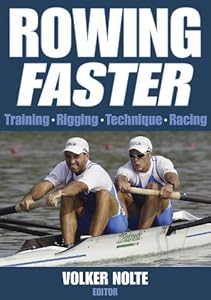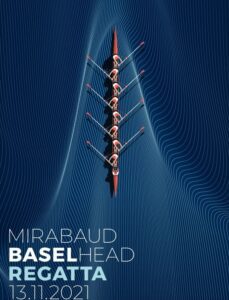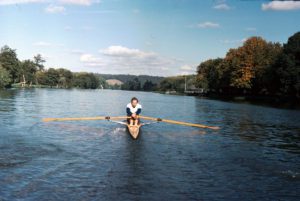Last week we shared David Harralson’s suggested improvements for Volker Nolte’s
In response to these suggestions Volker Nolte contacted Ed McNeely, the author of the chapter, they have written:
I would like to respond to your comments on the strength training chapter.
First, it is important to understand that the strength targets that are set have been set based on the strength levels that are necessary for rowing. There is a certain amount of strength that is necessary in any sport and attempting to push strength levels beyond that level is not a good time investment for the return that you get on performance.
The data I have collected over the past 20 years does not support needing higher levels of strength than those in the tables. From the strength data, the on water force data and erg performance data it is clear that once you hit these strength levels the time required to push strength levels higher could be better spent training other components of rowing that will pay off in greater on water improvements. If you are capable of lifting more than the target levels good for you, it suggests that this is not a weakness and that you should be focusing your training elsewhere.
As for the squat, please don’t assume that because a squat is normally performed incorrectly that the squat is invalid. There is no reason that a squat cannot be done to the same depth as a front squat. Parallel squats are a product of the fitness industry and any good strength coach will have their athletes perform a squat to full depth. Keep in mind that the front squat is a quad dominant squat that limits the use of the glutes and erector spinae. If you have a very upright posture at the catch the front squat may be applicable but as you reach over more the back squat becomes a better exercise. I n fact we have seen from in boat force curves that the technical errors in the curve are very similar to the weaknesses and technical errors observed during a back squat and that in many cases it is possible to predict technical errors in the boat based on how the back squat is performed.
Over this past Olympic cycle I have observed many international calibre rowers who could front squat very well but still had “holes” in their on water force curves. As soon as they worked on their back squat the errors in the boat started to resolve.
Ed McNeely and Volker Nolte









This Post Has One Comment
Thanks to Ed for responding so comprehensively.
With respect to the squat, I was referring to the usual definition for the squat that calls for completing the lift when the hip joint passes below the knee joint. Many fitness professionals consider squatting below parallel to be risky, but I do not believe that. The Olympic clean allows the buttocks to descend to below parallel but remain off the lifting platform. If the book had called the squat a “full depth squat” or similar wording, I would not have been confused. Incidentally, I was not aware that when I did a front squat I was not exercising my glutes and erector spinae, but then I do the dead lift to strengthen those muscles.
It is interesting that rowers who do front squats have holes in their force profile. Some programs that have used the back squat have not had the results they expected. There is a lot of opinion that weight lifting has a limited correlation with rowing performance. Alternatively, as you implicitly suggest, both the front and rear squat (possibly together with the leg press and dead lift) may be necessary to develop the muscle fibers properly for rowing.
As you suggest, a certain level of strength is necessary to row. Then technique is of paramount importance. Boat speed increases as technique improves up to a maximum value. Then, to improve boat speed, more force on the blade, or strength, is necessary. The athlete needs to strengthen their rowing oriented muscles and translate that into rowing speed. This also usually involves developing the aerobic systems, lung capacity, heart rate, breathing rate, hemoglobin capacity, etc. Once the athlete achieves their maximum in technique, strength, and aerobic fitness, they row at their optimum speed.
The body maintains anaerobic reserves of around thirty seconds that allows applying greater force for that period, if the athlete has that capability. See this in the last 200 or so meter sprint, where some rowers can either row away from or row through their less strong competition. For a prime example, see my FaceBook page “2012 Lake Merritt MM2-“. I had badly checked our boat and we were behind the officials launch. In the space of 200 or so meters, we rowed through three boats in front of us, primarily due to the 2.5X BW dead lift strength I had developed. The stroke was 30 years younger than me and in normal rowing could pull me around. However, in this short sequence, although we were lightweights, with our superior strength, we were clearly faster than our heavy weight competition.
Everybody loses strength with age. Tables 12.3 and 12.4 indicate a severe drop off in strength with age, a factor of 3/1 for 70-year-old men. In power lifting competitions, a 70-79 year old middle weight (corresponding to C2 lightweight) can dead lift 3X+ BW. An open middleweight can dead lift 4X+ BW. This is not nearly the drop off as indicated in the tables. Perhaps an intern could collect the results from power lifting contests to build up data on how strength actually changes with age and with respect to body weight, and those figures suitably de-rated for the purposes of rowing strength.